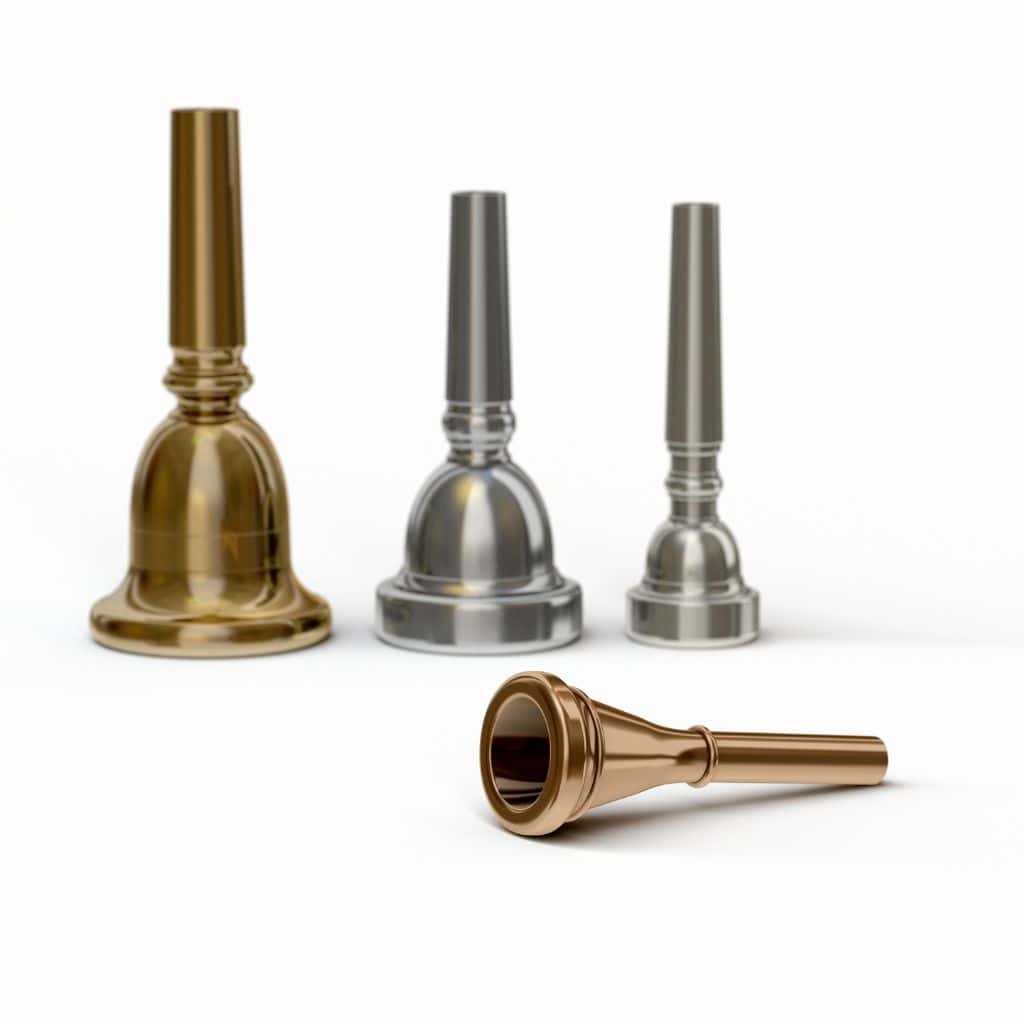Do you wish to know what the difference between 5C and 3C mouthpieces is? From my research online, I discovered that the fundamental distinction between 5C and 3C mouthpieces for brass instruments is their size, with the 3C often being bigger in diameter and depth than the 5C.
This has an impact on tone quality, with the 5C providing a brighter sound and the 3C generating a warmer tone. In addition, the rim contour and airflow/resistance may differ between the two mouthpieces.
While the 3C is frequently seen as more adaptable, the choice is ultimately up to the player’s tastes and playing style.
Let us go deeper:
Is 5C Or 3C Better?
The decision between a 5C and 3C mouthpiece for brass instruments is determined by player skill level, tone preference, and musical diversity.
The 5C, with its smaller size, is generally preferred by novices or those with smaller lips since it provides simpler playing and a brighter tone.
The bigger 3C mouthpiece, on the other hand, produces a warmer tone and is more versatile, making it popular among more skilled players and those looking for a broader spectrum of expression across musical forms.
Finally, there is no clear “better” alternative; it depends on individual tastes and playing needs.
Players are encouraged to experiment with different mouthpiece sizes and seek advice from experienced musicians to discover the optimum fit for their specific demands.
What Is A 3C Mouthpiece Good For?
A 3C mouthpiece is prized for its versatility and suitability across various musical styles and playing situations. Its larger size and deeper cup produce a warm, rich tone ideal for lyrical passages, ballads, and expressive melodies.
The 3C mouthpiece offers excellent control and clarity in the upper register, making it suitable for demanding passages and high notes.
Additionally, its superior projection and volume make it well-suited for ensemble playing, solo performance, and situations where a strong, clear sound is essential.
Intermediate to advanced players often prefer the 3C mouthpiece for its balance of warmth, clarity, and versatility, allowing them to navigate diverse musical genres and performance contexts with confidence and precision.
What Is A 5C Mouthpiece Good For?
A 5C mouthpiece is valued for its bright and concentrated tone, making it perfect for genres such as jazz, marching band, and solo performances that need strong projection.
Its smaller size provides greater agility and comfort in the upper register, making it ideal for performing quick passages with precision.
Furthermore, the 5C mouthpiece may be more comfortable for novices or those with smaller lips, facilitating embouchure development and control.
It is popular among trumpet players seeking adaptability across musical forms and performance demands, such as lead trumpet parts in big bands and commercial music contexts.
Overall, brass musicians prefer the 5C mouthpiece due to its blend of brightness, agility, and adaptability.
What Does A Megatone Mouthpiece Do?
A Megatone mouthpiece, like those designed by Bach for trumpets, features a thicker rim and increased mass compared to standard mouthpieces.
This design aims to enhance several aspects of trumpet performance. Firstly, it can contribute to a richer, fuller sound with added depth and resonance.
Additionally, the increased mass may improve projection and carrying power, making the player’s sound more prominent in ensemble settings.
Some players also find the thicker rim of a Megatone mouthpiece to be more comfortable during extended playing sessions, as it distributes pressure more evenly on the lips.
Furthermore, the added mass can provide greater stability and control, particularly in the lower register, facilitating more precise articulation and tonal control.
Again, a Megatone mouthpiece offers trumpet players potential advantages in sound quality, projection, comfort, and stability.
Is 5C and 5m the same size?
No, a 5C and a 5M mouthpiece are not typically the same size. While both mouthpieces might have a numerical designation of “5,” the letters following the number usually indicate different models or variations within the same brand or series.
The specific dimensions, cup depths, rim shapes, and other features of the 5C and 5M mouthpieces can vary depending on the manufacturer and the intended use of each model. It’s important to consult the specifications provided by the manufacturer or try out the mouthpieces personally to determine any differences in size or performance between the 5C and 5M models.
Conclusion
Now that we have learned that the 5C and 3C mouthpieces differ in size, tone, and versatility.
The 5C, smaller and brighter, offers agility and ease in the upper register, while the 3C, larger and warmer, provides enhanced projection and stability, making it versatile across musical genres.
Player preference, style, and desired sound influence the choice between the two mouthpieces.

